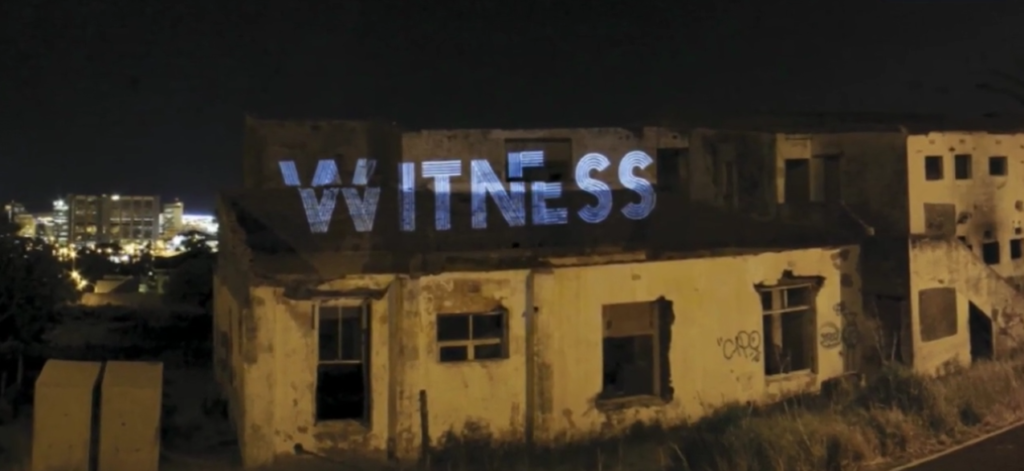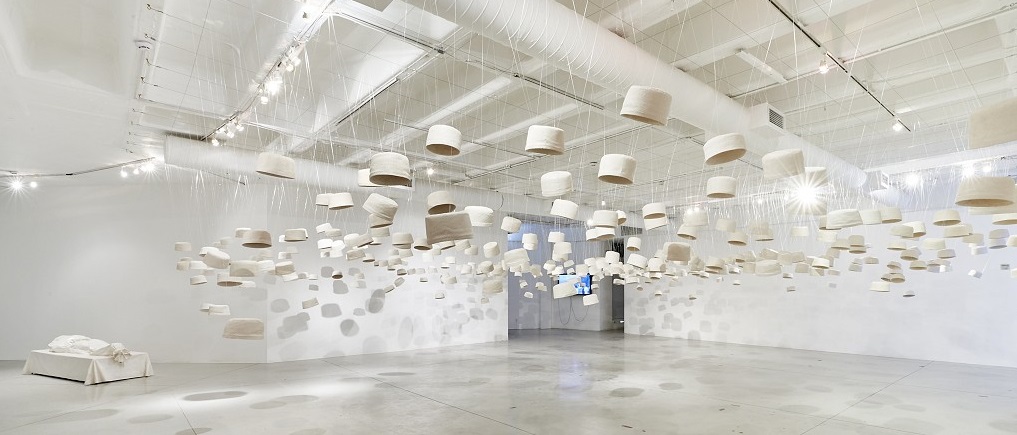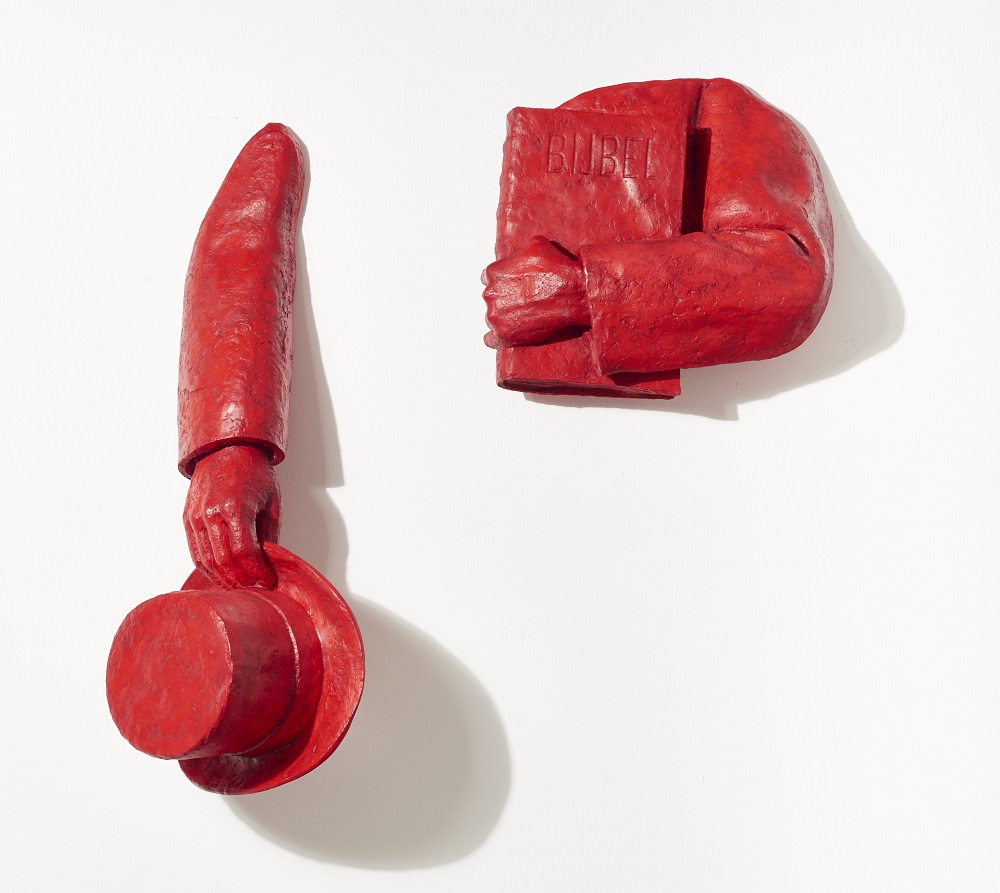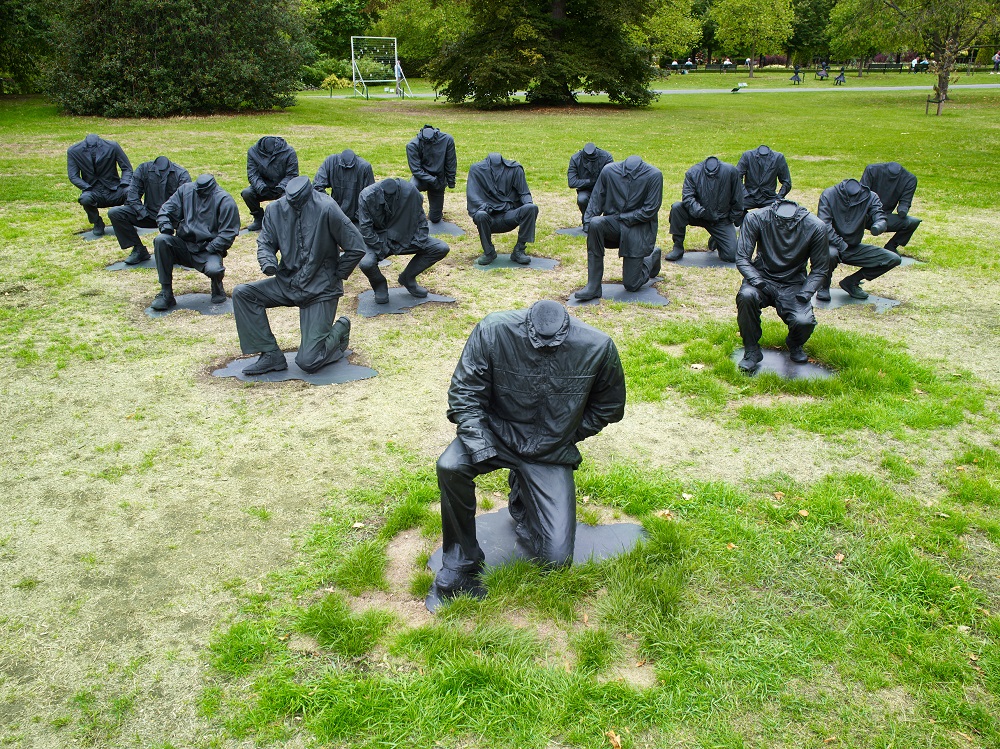This year’s winner of the prestigious FNB Art Prize was announced as Cape Town-born artist and activist Haroon-Gunn Salie. We are looking forward to seeing his new work at the FNB Joburg Art Fair‘s 11th edition at Sandton Convention Centre from September 7-9.
Often site-specific, Gunn-Salies’s multi-disciplinary works open a dialogue with past injustices and their often malignant lingering presence in South Africa’s present. Gunn-Salie seeks to transform community oral histories into artistic interventions and recently worked on a fascinating project in Brazil. His slight frame belies the incredible power of his artistic work. Here we’ve rounded up some of his key works to date, and the reason why he is an artist worth watching.
Witness in District Six

Gunn-Salie’s 2012 graduate exhibition Witness (Cape Town’s Michaelis School of Fine Art) took over a derelict house in Cape Town’s District Six for one week ahead of its demolition and focused on the many unresolved issues surrounding the Apartheid forced removals that blighted this once vibrant neighbourhood. To create the project Gunn-Salie worked together with residents of District Six who had been victims of the forced removals to share their stories in sculpture and installations. One of the works, a triptych of mirrors emblazoned with the words ‘Turn the Other Way’, inspired by a story which one of the residents shared with the artist, was subsequently bought by American rapper P Diddy.
History After Apartheid

In his 2015 exhibition History After Apartheid at Goodman Gallery, Gunn-Salie took up the history of Imam Abdullah Haron, an outspoken critic of Apartheid who died in police custody in 1969. For his installation Amongst Men, Gunn-Salie spent hours interviewing the Imam’s family to learn more about his story. The result was a powerful installation of more than 400 cast kufiyas (traditional Muslim headwear for men) which he hung from the ceiling representing the mourners at the Imam’s funeral, accompanied by a reading of the poem Patriot or Terrorist by anti-apartheid activist James Matthews, who was also imprisoned in 1969.
Gunn-Salie described the work in an interview with the Cape Argus as “an invitation to become one with the men… one of these people. It’s essentially the opposite of a monument because a monument makes a hero out of the individual; it’s linear and high. This is representing the mass. All the multitude of voices touched by the imam who came, in this act of defiance, to attend this funeral.”
The exhibition also included a collection of haunting mounted sculptures, titled Soft Vengeance, of the ghostly blood red arms and hands of former leaders including Paul Kruger and Jan van Ribeek which appeared to be reaching out through the gallery walls, a reminder of the ongoing debate surrounding South Africa’s monuments and landmarks and the vision of the country’s heritage that they represent.

Marikana remembered in Senzenina

In February Gunn-Salie presented his latest work Senzenina at the New Museum in New York City. The work later travelled to London for the Frieze sculpture fair and a new installation based on it will be presented at this year’s FNB Joburg Art Fair in September. Representative of the striking miners who were shot by police at Marikana in August 2012, Senzenina is made up of 17 headless and handless men rendered entirely in black, who are crouching on their haunches.
An ongoing project that seeks to address the unresolved injustices surrounding the Marikana massacre, for his Senzenina installation at the FNB Joburg Art Fair Gunn-Salie is preparing a new visual and sound installation where visitors will be immersed in a 7.2-channel surround-soundscape that relives the fateful day in August 2012.